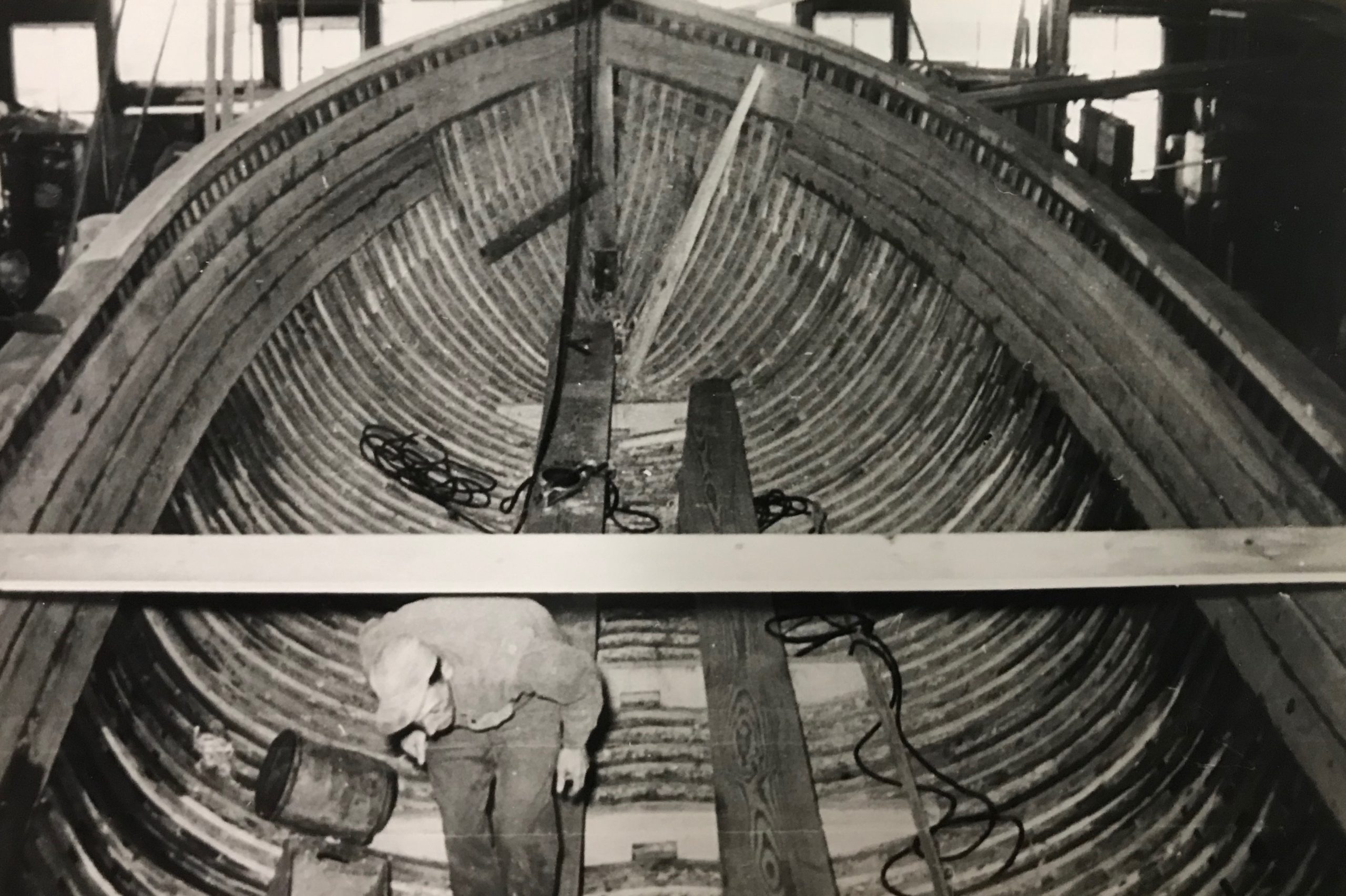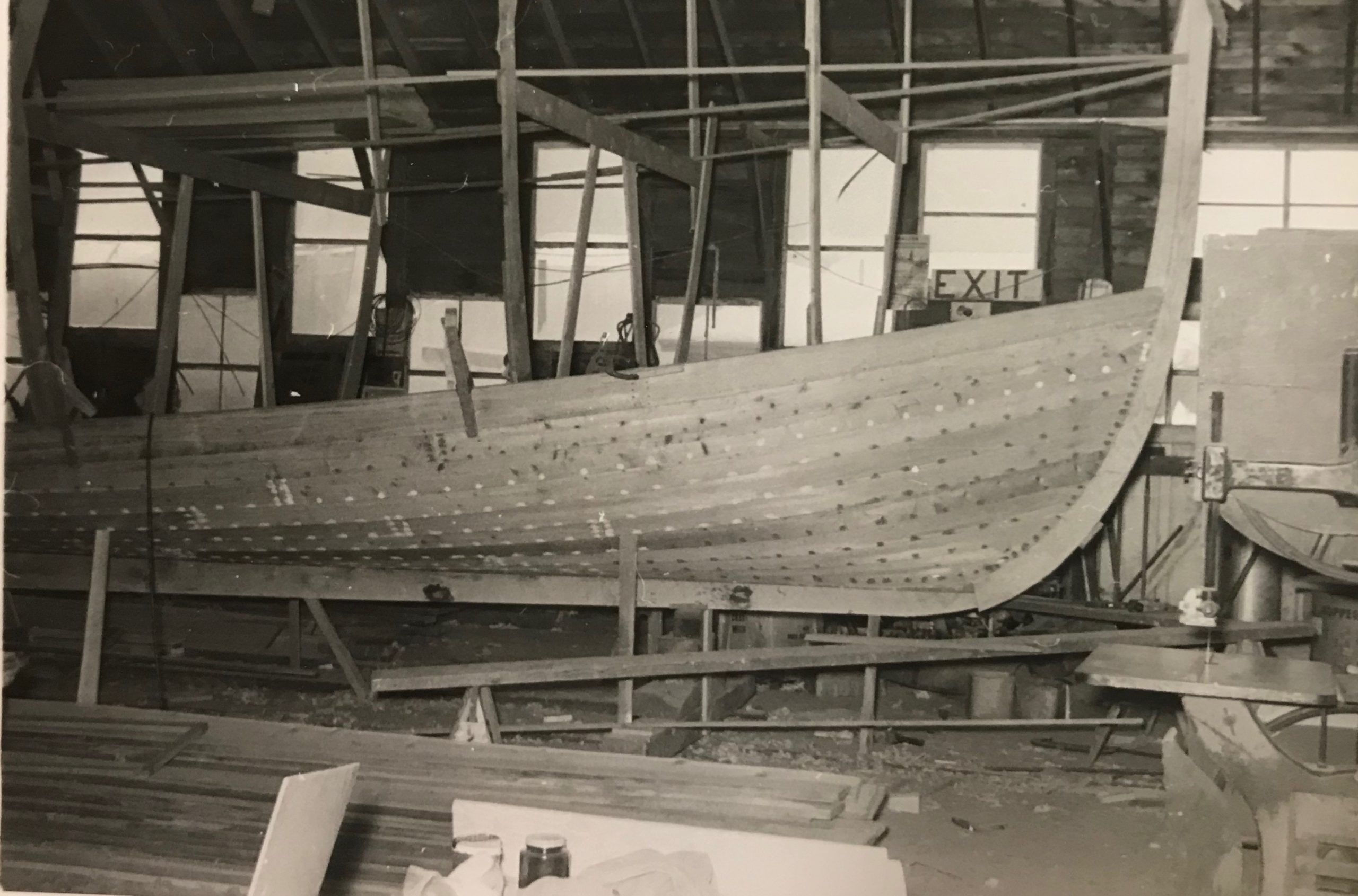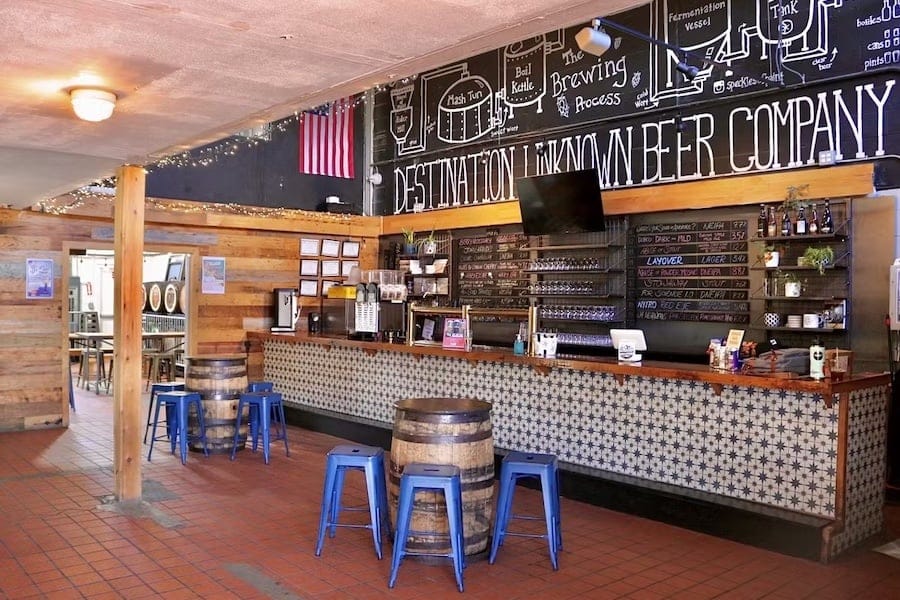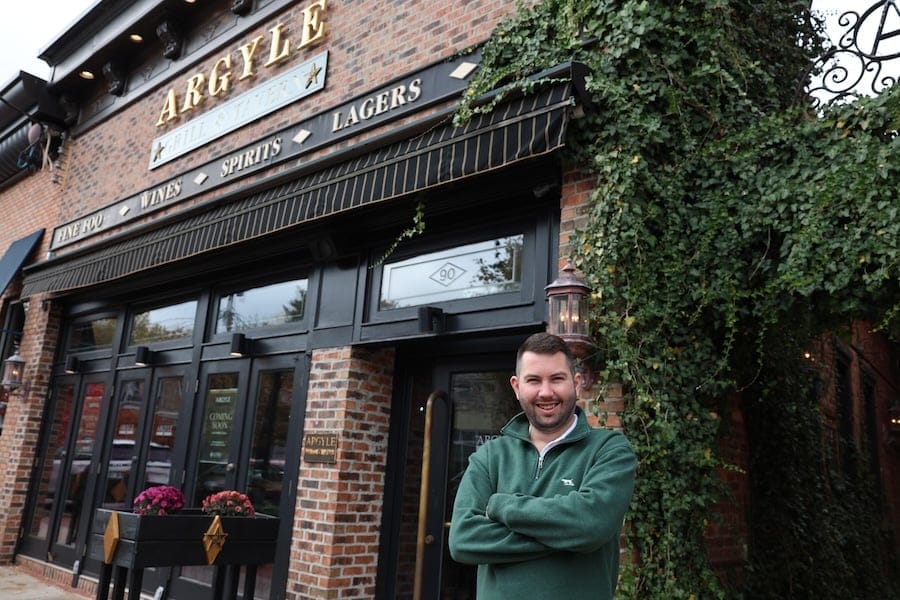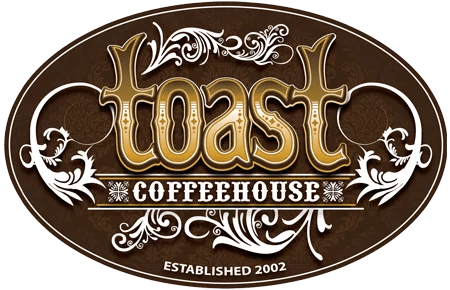
Greater Bay Shore coverage is funded in part by Shoregate, now leasing brand-new premium apartment homes in the heart of Bay Shore. Click here to schedule a tour.
by Chris Verga |
Long before the neon of our Main Streets, or the shopping malls and strip malls, or the industrial parks, there was a thriving boat manufacturing industry here on Long Island.
Along the shores of the Great South Bay, within the towns of Islip, Brookhaven, and elsewhere, durable boats were increasingly needed to harvest hundreds of thousand of bushels of shellfish.
Ships were also needed to catch and deliver menhaden, which was used as fertilizer on our farms, and other fish to be transported to the island’s half dozen or so fish processing plants.
Rugged boats were being built for anything from harvesting the hundreds of water fowl collected from the shorelines each month, to entertaining the thousands of vacationing upper and middle class city residents who flocked to our bays, beaches and hotels each summer.
The hustle and bustle of the Town of Islip’s 18,346 people in 1910 was centered around navigating and harvesting the bounty of the sea. The South Shore hamlets were not only experiencing an economic boom, but an identity being shaped around the water.
Places such as Port Jefferson were becoming globally famous for shipbuilding. Earlier this year, a sculpture was erected near the train station there to reflect the village’s proud history.
The people of Bay Shore’s boat yards along Degnon Boulevard, Homan and Ocean avenues, for example, worked tirelessly to keep up with orders for pleasure boats to appease the tourists, or durable commercial boats that helped feed the world’s growing taste for the Blue Point oyster and Long Island duck.
These yards, such as Brewster’s Boat Yard on Ocean Avenue, turned into family dynasties in boat building, each offering hundred of years’ worth of experience within families. Boat builders in these yards were groomed for decades before becoming known as a master at their craft.
Jorgensen boat yard on Degnon Boulevard specialized in commercial fishing vessels. Brewster’s boat yard specialized in the horal scooter, which utilized a flat bottom to get in and out of marshlands for hunting duck. Further east, in Patchogue, Gil Smith’s boat yard would innovate a new form of the cat boat for racing.
Each boat took months of skilled labor — with no details overlooked.
story continues below photo
 This large-scale manufacturing sector flooded boat markets with durable, high-quality boats that were purchased throughout the country. But eventually, the art of wood boat craftsmanship that dominated the early 20th century made way for the cheaper, mass-produced fiber glass boats.
This large-scale manufacturing sector flooded boat markets with durable, high-quality boats that were purchased throughout the country. But eventually, the art of wood boat craftsmanship that dominated the early 20th century made way for the cheaper, mass-produced fiber glass boats.
The industry began to shrink, and shrink. And with that, a way of life and a means for living.
Seaborn Marina on Ocean Avenue in Bay Shore, formerly known as Brewster’s Boat Yard, rarely services wood boats.
They mainly service fiberglass, likely due to the expensive and time-consuming upkeep of the wood boats, they tell us.
Most marinas on the South Shore do not service wood boats at all, but refer owners to specialized boat yards that are limited in selection. But there are some.
“Wood boats are a labor of love,” said Eric Langendal of Anders Langendal Boat Builders in Greenport. “They come out of the water every year and are not like having an antique car you put in garage, they need to be varnished and finding the wood to maintain these boats can be challenging.”
The average wood boat serviced by Anders Langendal Boat Yard is about 70 years old, with the oldest 102 years old.
“Overall, wood boats represent an era of fine skills and craftsmanship which was a job, now many refer to it as an art,” Langendal added.
Members of the Scopinich family of East Quogue, which is one of the last generational boat-building families on Long Island, constructed their final boat in March.
The Scopinich family specialized in wood boat building, but started production of fiber glass boats in the early 1970s.
As the stock of wood boats gets older and the craft is overlooked as an antiquated skill, the occasional spotting of a wood boats in our waters will increasingly become just a symbol of a bygone era, now cloaked in the vacancy signs of old boat yards dotting the island’s rivers and canals.
Eventually, the boat yards give way to other commercial or residential projects, as our way of life here evolves and gets re-imagined.
Scroll down for photos of men at work building boats in Bay Shore, courtesy of the Bay Shore Historical Society.

